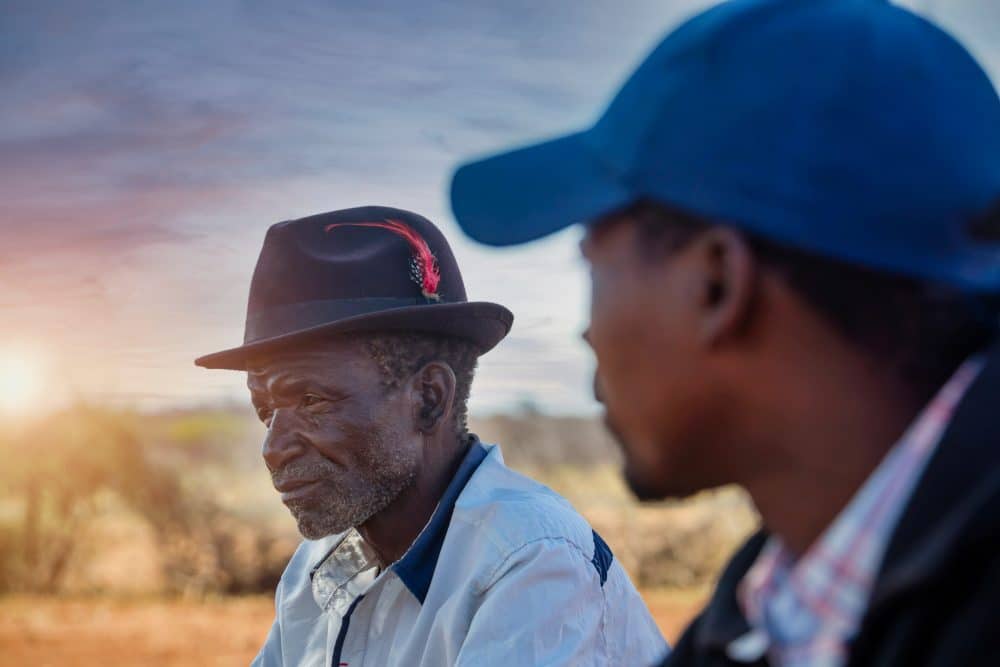Africa is a very culturally diverse continent, so it shouldn’t be surprising that this diversity is reflected in its linguistic landscape. 54 countries make up Africa, but the number of languages heavily exceeds that. But how many languages are there actually in Africa? Let’s talk about it!
How Many Languages Are There on the African Continent?
It is estimated that between 1,500 and 2,000 languages are spoken in different parts of Africa. While this is a pretty wide estimate, it is very hard to count the actual number due to the continent’s population and size, as well as the fact that many languages have few speakers or that many languages are spoken with little to no evidence of them available in written form – although linguists are leaning more towards the higher number.
To visualize how huge this number is, consider the fact that there are around 7,000 languages in the whole world – that means that almost ⅓ of all the languages spoken worldwide is used on the African continent. There’s truly no other place on Earth with as much linguistic richness as Africa.
African Language Families
It’s hard to say how many language families are present in Africa – some sources say four, others five, and others go even beyond that number. There are, however, at least four that could be considered the “main” ones.
Niger-Congo Language Family
This is, inarguably, the largest language group present in Africa. Consisting anywhere between 1,350 to 1,650 languages, it is by some considered to be a hypothetical language family. It can be found in almost every part of the continent, especially in Central, Western, Eastern and Southern Africa.
Some of the more known languages that make up this linguistic group include Swahili, Yoruba, Igbo and Fula.
Afroasiatic Language Family
The second biggest language group present in this part of the world is an interesting case, as it’s not only used in Africa, but also in Asia, particularly in the Middle East. It contains about 200 to 300 languages, mainly found in countries on the north of the continent, such as northern Nigeria, Morocco, Algeria, Tunisia, Ethiopia, Eritrea and more.
There are six branches that linguists typically use to divide this language family – Semitic (includes many varieties of Arabic, including Algerian Saharan Arabic spoken in Algeria and Egyptian Arabic used in Egypt), Berber (e.g., Shilha, spoken in Morocco), Egyptian (Coptic, used in Egypt), Cushitic (e.g., Somali, mainly used in the East African countries), Omotic (e.g., Mao, used in Ethiopia), and Chadic (e.g., Hausa, spoken in Nigeria and Niger).
Nilo-Saharan Language Family
The Nilo-Saharan language family, mainly present in Eastern Africa, specifically countries like Kenya, Tanzania, Uganda, Chad, etc. is made up of about 80 languages.
The most common languages within this language family include:
- Kunama languages – spoken mostly in Eritrea and Ethiopia; includes languages like Bitama and Ilit. Previously considered as part of the Chari-Nile language family, but that is no longer a valid genetic unit.
- Berta languages – speakers of these languages mostly live in Ethiopia and Sudan. Two main varieties of Berta are Berta proper and Gobato. Previously considered as part of the Chari-Nile language family, but that is no longer a valid genetic unit.
- Songhai languages – spoken mostly along the Niger River. At least six varieties are recognized, and that includes Zarma (biggest one with almost 2 million speakers), Western Songhai (main varieties – Djenne Chiini and Koyra Chiini), Central Songhai (main varieties – Humburi Senni and Kaado), Eastern Songhai (Koyraboro Senni – spoken by about 400,000 people), Dendi and Tadaksahak.
- Saharan languages – spoken mostly around Lake Chad. This group includes languages such as Berti (now extinct), Bideyat, Kanembu, Kanuri, Teda and Zaghawa.
- Maban languages – this group of languages is mostly spoken in the border area of Chad, Sudan and Central African Republic. Maba is the largest member of the group, accompanied by Karanga, Kibet, Massalat, Masalit (Massalit), Marfa, and Runga, as well as Mimi of Nachtigal and Mimi of Gaudefroy-Demombynes.
- Komuz languages – spoken mostly in the border area separating Ethiopia from Sudan and South Sudan. It consists of Koma, Twampa (Uduk), Kwama, and Opo (Opo-Shita). There’s also Gule (Anej) – however, this specific variety is often considered extinct, as speakers of it switched to (Sudanese) Arabic for daily communication.
- Fur languages – spoken mostly in western Sudan and neighboring Chad regions.
- Eastern Sudanic and Central Sudanic languages – Previously considered as part of the Chari-Nile language family, but that is no longer a valid genetic unit.
Khoisan Language Family
This language family is believed to contain anywhere between 40 to 70 languages, although some sources claim the number to be a lot smaller, consisting of only about 20 or even fewer languages. It is mostly found in Southern Africa, with a few exceptions used in the East.
It is believed that there are three main groups within this language family – Khoe-Kwadi, Kx’a, and Tuu – as well as two isolated languages, Hadza (spoken along the shores of Lake Eyasi in Tanzania by about 1,000 people) and Sandawe (spoken in the Dodoma Region of Tanzania by about 60,000 people).
Some languages that can be found within those three groups include:
- Khoe-Kwadi – this sub-group of languages is believed to have about a dozen members, with some of them either endangered or already extinct. The stable languages present in it include Khwedam (spoken in Namibia, Angola, and Botswana), Naro (believed to be used as the first language among the ethnic community), Hai|ǁom (used in Namibia), and Khoekhoe (spoken in Namibia and believed to be used as the first language among the ethnic community, used as the language of instruction in education).
- Kx’a – made of four languages, it contains two stable (Kung-Ekoka and Juǀ’hoansi, both spoken in Namibia and Botswana) and two endangered languages (ǂ’Amkhoe spoken in Botswana and Northwestern !Kung spoken in Angola and Namibia)
- Tuu – most languages from this group are extinct, with two (Nǁng, indigenous language used in South Africa, and Taa, spoken in Botswana and Namibia) remaining as endangered ones.
What About Indo-European Languages?

Indo-European languages might not be indigenous to the African continent, but they are very much present there even today, all due to its history of colonization. The English, French, Spanish, Dutch, and many more have, at some point, controlled at least some part of the continent, and the linguistic reminders of that can still be noticed today.
For example, Liberia has English as one of the official languages (English varieties known as Liberian English), while in South Africa, English is a widely present language used in the government, media and business. English, along with Afrikaans, another Indo-European language, are also considered the official languages in the country.
Are African Languages Dying?
Unfortunately, yes. Many of the African languages are either already extinct or are endangered. There are also some examples of dormant languages – a term used for a language that typically has no native speakers, it is not used for official communication, but it is still used by some people, for example, in academia or as a symbol of ethnic identity.
From non-African languages, the most common example of a dormant language would probably be Latin. While it has no native speakers and no one uses it to communicate, reading Latin is still being studied in some schools.
Does Africa Have Sign Language?
Yes, there are actually several different sign languages in Africa, including Tunisian Sign Language (derived from Italian Sign Language), Tanzanian Sign Language (seven varieties present, not one standardized version), Gambian Sign Language (developed from a mix of Dutch Sign Language and British Sign Language) or South African Sign Languages (used along American Sign Language).
Which Country Has the Most Languages?
So much diversity on the continent poses a question – Which of the African countries is the most diverse linguistically? The answer is Nigeria. It is estimated that there are over 500 languages present there. Cameroon and the Democratic Republic of the Congo are not far behind with over 200 languages each.
Most Spoken Languages in Africa
After everything we said, there’s one more thing that we would like to share with you, and that will probably be interesting to anyone discovering African languages – Which, out of the thousands of languages spoken on the African continent, are the most spoken?
We compiled a list of the 10 most common languages in Africa, taking into account speakers for whom it is either first, second, third, etc. language. However, keep in mind that these are estimates, and the actual number might differ.
| Language | Number of Speakers | Where Spoken |
| Arabic | 150 million (only in Africa) | Spoken mostly in North Africa. |
| Swahili | 150 million | Spoken mostly in East Africa. |
| Hausa | 75 million | Spoken mostly in Nigeria, Niger, Cameroon, Benin and Chad. |
| Fula | 65 million (includes dialects) | Spoken mostly around the Sahara Desert region. |
| Yoruba | 45 – 55 million | Spoken mostly in southwestern Nigeria. |
| Igbo | 45 million | Spoken mostly in eastern Nigeria. |
| Oromo | 40 million | Spoken mostly in Ethiopia, as well as Kenya, Somalia, and Egypt. |
| Amharic | 20 million | Spoken mostly in Ethiopia. |
| Somali | 18 million | Spoken mostly in Djibouti, Ethiopia, Somaliland, and Somalia. |
| Zulu | 12 million | Spoken mostly in South Africa. |
The Bottom Line
As you can see, Africa is a very linguistically diverse country – there are probably many languages that haven’t been discovered yet due to the size of the continent, so chances are that in ten or twenty years, the total number of languages will differ from what we know today.
Either way, it is definitely an interesting topic for any linguistics enthusiast, as there’s so much more to discover about it.
For those hungry for linguistics knowledge, we encourage you to take a look at our blog. Have you ever wondered how exactly Canadian and American English differ? Or maybe you want to learn about 1920s slang that definitely deserves a comeback? We have answers to this and more!

